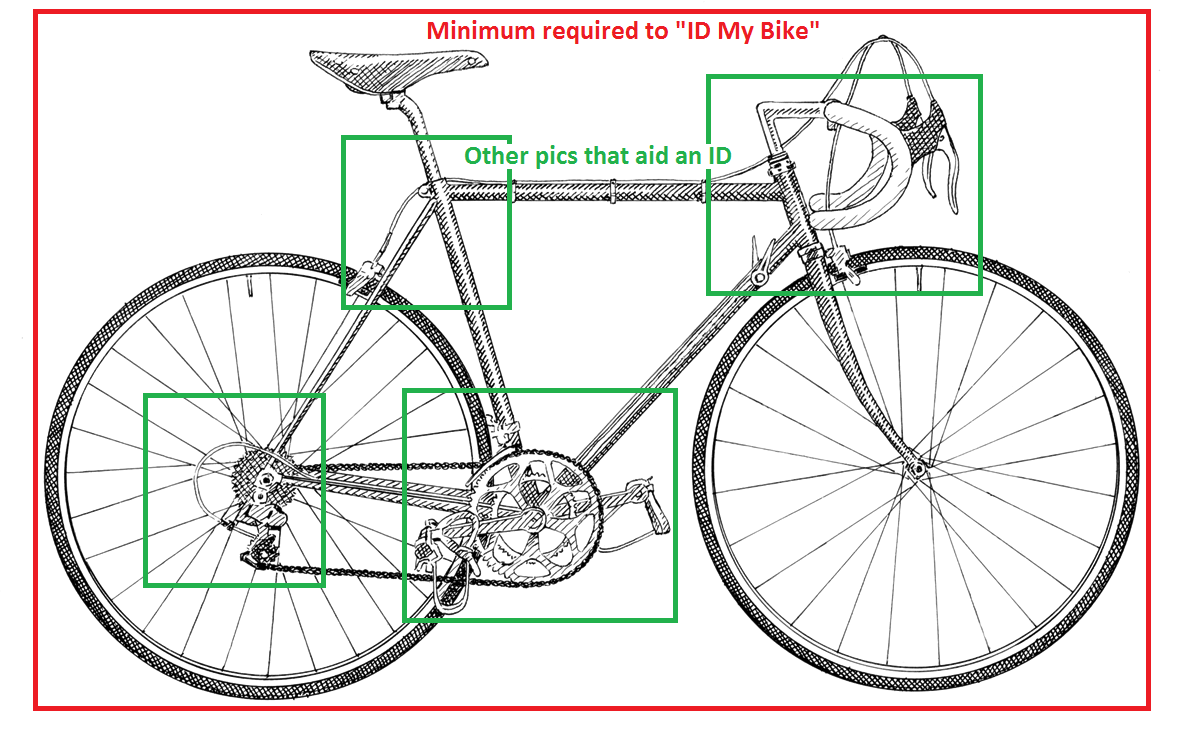This answer emphasizes a few things in other answers for clarity. In general, we ask for clear photographs of the entire bike, and preferably some close ups of select parts as well. Be aware that these are usually necessary but not sufficient to ID a manufacturer, model, and year. Identifying a manufacturer is easier, identifying model and year is harder.
Bicycle companies typically rely on decals, usually on the down tube at minimum, and head tube badges for branding. If you have those in the photo, you usually know who the bicycle manufacturer is. Of course, if those items are present, then the OP usually has the information to identify the manufacturer already. Nevertheless, not all head badges state the manufacturer clearly, but they can be recognized by enthusiasts. One example is Giant Bicycles' head tube badge. Naturally, some bicycles have had their decals and/or head badges removed.
Failing that, with steel bikes, the design of the frame lugs and fork crown lugs can sometimes be informative, although not all frames use lugged construction. Some other design elements on bikes in general can be distinctive, which is why Criggie mentioned things like unusual-looking dropouts, sometimes the seat cluster. As another example, some Colnago steel bicycles (e.g. Master and Master X-Lite) used star-shaped down tubes on the argument that they had higher torsional rigidity, and I don't believe anyone else used these. I think that these unusual design elements are more rare, however.
Identifying the model and manufacturing year of the bicycle can be harder. Sometimes, enthusiasts can match a paint scheme to a catalog, thus providing model and year - if someone posted a scanned catalog online, or if they collect catalogs, or if there's an example of the bike online, e.g. on Bicycle Blue Book (but that tends to cover more modern bikes). We can make guesses if we recognize the components or other frame features. For example, in the first photo Criggie posted, the components look like 9-speed Shimano 105, which was current in the early 2000s. The bike has a quill stem, rather than a threadless headset and stem, and these were less common on early 2000s bikes. So, it's possible the bike is from around the early 2000s, but it's also possible the components were refitted and the bike was from the 1990s.
It's been stated elsewhere, but the serial number is usually not helpful at all. Presenting the serial number alone is worthless, and it is quite possible that the question will get downvoted and maybe closed.






[How do I ask a good “ID My Bike” question?](https://bicycles.meta.stackexchange.com/questions/1337/how-do-i-ask-a-good-id-my-bike-question)